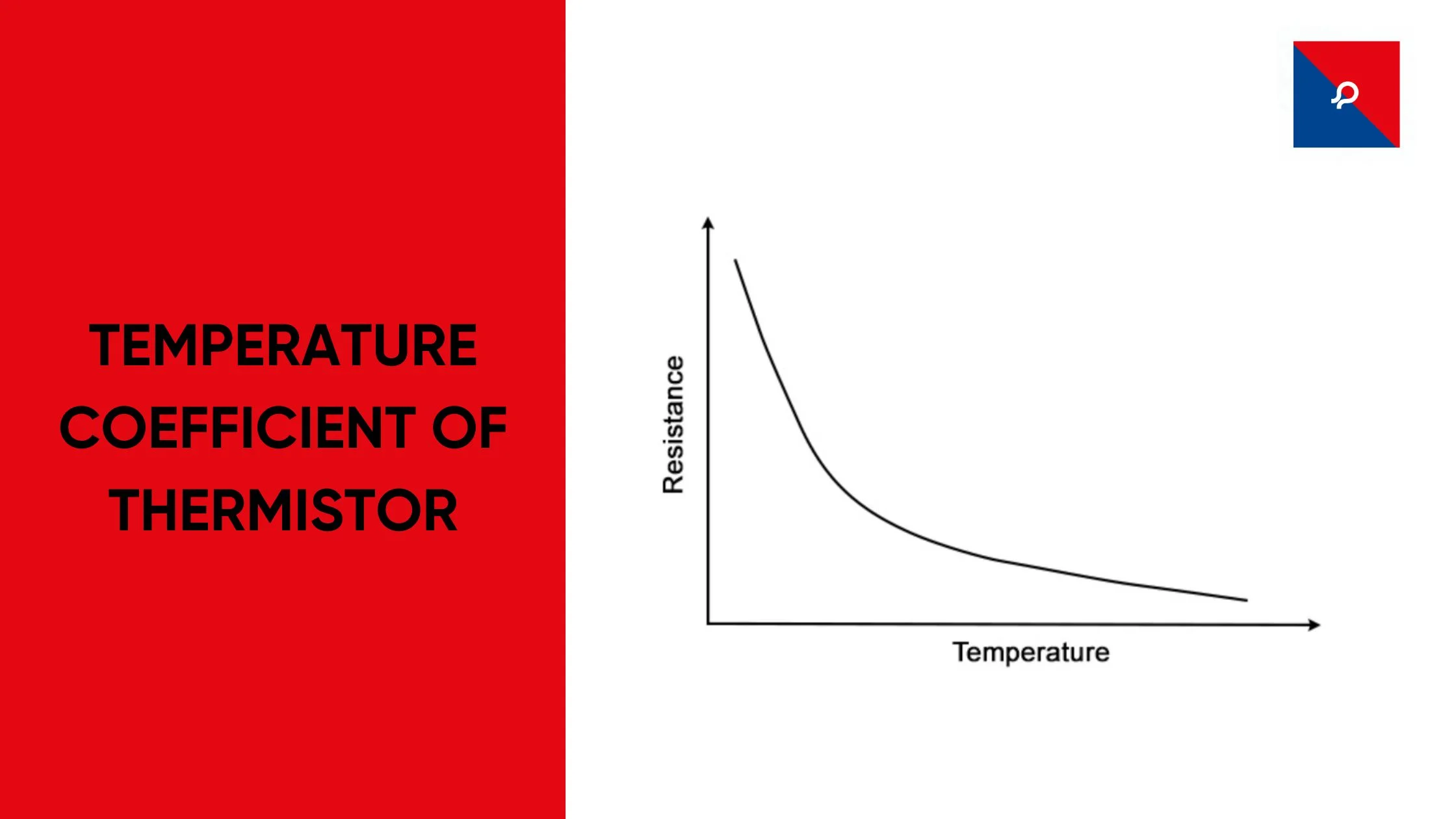
Have you ever stopped to think about how your gadgets always seem to know the exact temperature? The secret lies in a tiny yet powerful component called the thermistor. Among the various key factors that influence a thermistor's efficiency is something called the temperature coefficient of a thermistor. But what does that mean exactly? Let’s break it down. The temperature coefficient shows how a thermistor's resistance changes with temperature. Sounds technical? Don’t worry. We’ll simplify it. Knowing this concept is crucial because it helps in building systems that demand precision, like HVAC, medical devices, or automotive monitoring.
Let’s dive deeper into understanding the temperature coefficient of resistivity/thermistor and also related formulas to see why it’s very important.
What is the Temperature Coefficient of Thermistor?
The temperature coefficient tells us the relationship between a thermistor’s resistance and the change in the temperature. The resistance of Negative Temperature Coefficient (NTC) thermistors reduces with rising temperatures. This property makes them needed for systems that require fast and accurate temperature readings.
The NTC thermistor's negative temperature coefficient is shown using an R-T graph.
Key points to understand:
- It is represented by the symbol "%/°C."
- It allows correct calculations of resistance change under changing temperatures.
- Therefore it helps ensure reliable performance in sensitive systems.
Imagine driving a car without proper temperature monitoring. It’s like flying blind. Thermistors, thanks to their precise temp readings, save us from such risks.
Obtaining the Temperature Coefficient of Resistivity for a Thermistor
First let's define Temperature Coefficient of Resistivity
The temperature-dependent coefficient for resistivity of a substance tells how much its resistance varies on temperature. In thermistors:
- Materials with negative coefficients (like NTC thermistors) reduce resistance as temperatures rise.
- Positive coefficients (used less often in thermistors) increase resistance with temperature.
This behavior stems from the materials’ atomic structure, making them ideal for temperature monitoring.
Temperature Coefficient of Resistance Formula
To compute the temperature coefficient of resistance formula, we use:
Where:
- α (alpha): Temperature coefficient
- β (beta): A material-specific constant for thermistor
- T: Absolute temperature in Kelvin (K)
Temperature coefficient of resistance unit
The degree to which a material's resistance varies with temperature is indicated by its temperature coefficient of resistance. Usually, it is represented in Kelvin (K⁻¹) or degrees Celsius (°C⁻¹).
Step-by-Step Example: Calculating the Temperature Coefficient
Let’s simplify with an example:
- Consider a β of 4000 K and temperature of 27°C (300 K).
- Plug these into the formula:
- To determine the temperature coefficient, solve for α.
This result can guide engineers in designing systems that depend on accurate resistance-temperature relationships.
Why Does the Temperature Coefficient of Thermistor Matter?
There are many reasons to understand the temperature coefficient of thermistor. Few reasons are:
- Accuracy: Systems like medical devices or automotive engines demand perfect temperature readings.
- Stability: The coefficient ensures reliable performance for a long duration.
- Tolerance Management: It helps in setting acceptable ranges for resistance changes.
Think of it like this: A GPS without accurate location tracking would frustrate us. Similarly, a thermistor without proper temperature coefficient calculations risks inaccurate readings.
How are Thermistors Made?
Thermistors are made by using semiconductor substances- copper oxide, cobalt, and manganese. Here’s how they are manufactured:
- Create a mixture by mixing metallic oxides with a base.
- Shape them into desired forms.
- Heat the material to achieve the required properties.
The resulting component provides stable, reliable temperature readings across a wide range.
Applications of NTC Thermistors
NTC thermistors are used in many industries. Let’s look at some practical examples:
- HVAC Systems: Regulating heating and cooling efficiently.
- Automotive Applications: To monitor coolant and engine air intake temperatures.
- Medical Devices: Maintain temperature stability in incubators.
- Consumer Electronics: Helps to prevent overheating in gadgets like laptops and smartphones.
These uses show how crucial the temperature coefficient is in ensuring precise and dependable performance.
Advantages of NTC Thermistors
Why are NTC thermistors so widely used? Here’s why:
- Quick Response: React quickly to the temperature variations.
- High Precision: Give stable and accurate readings.
- Cost-Effective: Affordable for sensing temperature.
- Versatile: Work across a range of temperatures, from -100°C to +350°C.
Key Takeaways
To sum up:
- The temperature coefficient of resistance unit is crucial for thermistor accuracy.
- It’s calculated using the formula involving β and temperature values.
- Understanding and managing this parameter ensures reliable performance in applications like HVAC, medical devices, and automotive systems.
Conclusion
Understanding the temperature coefficient of thermistor is essential. It helps us keep track of temperature accurately. From hospital incubators to car engines, thermistors play a big role in keeping things safe and efficient. If we understand how they work and make sure they are accurate, we can improve our systems. Need help picking the right thermistor? Check out our Comprehensive Thermistors Guide to find the right component for your application. Let’s work together for better and more reliable solutions!
Frequently Asked Questions
1. What is the temperature coefficient of a thermistor and what does it mean?
2. Which typical uses exist for NTC thermistors?
3. For accurate temperature readings, why are NTC thermistors recommended?
4. How is dependable thermistor performance ensured by JR Sensors?

Voltage Stabilizer Function: Why It’s Essential for Appliance Safety
Understand how a voltage stabilizer protects appliances from power fluctuations, prevents electrical damage, and ensures long-lasting performance. Discover its key functions and why it’s vital for every home and business.

